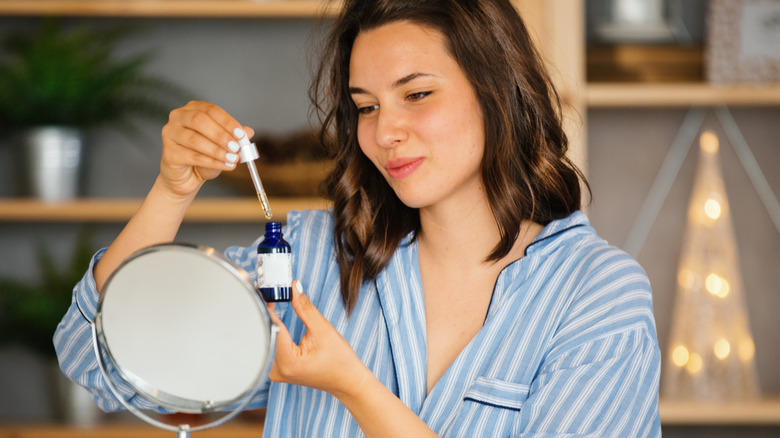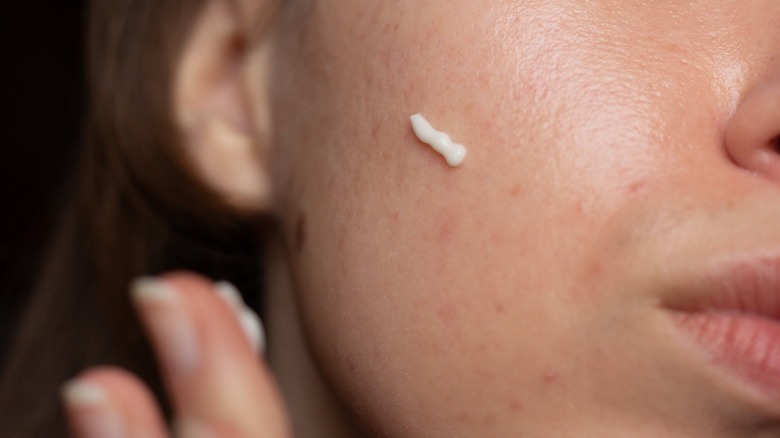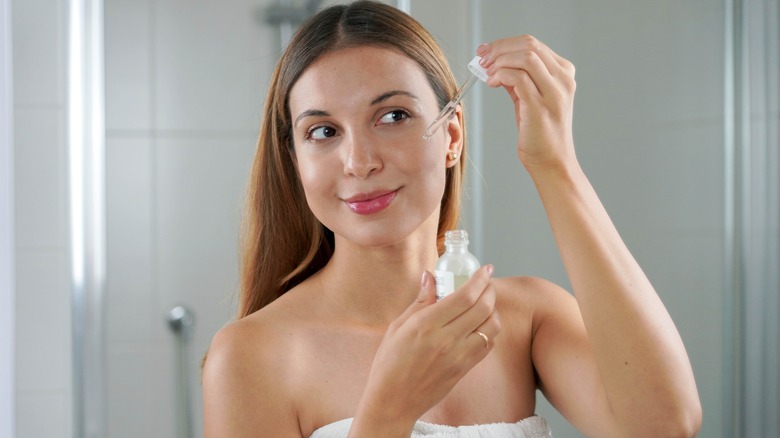Here's How To Use Retinol To Help Fight Acne Breakouts
Adding retinol to your skincare routine may seem scary at first, but doing so can improve your complexion, especially if you are someone who struggles with acne.
Retinol, a vitamin A derivative, combats new acne while erasing any scarring from previous breakouts. Before you start using retinol though, there are a couple things to keep in mind: If you are not careful with its potency and how often you use it (especially in the beginning), you could experience a host of side effects ranging from mild irritation like redness and dryness to flaking and burning.
Whether you've been using retinol for two months or two years, it makes your skin more sensitive to sunlight, so always wear sunscreen with a high enough SPF and avoid wearing retinol during the day to protect your skin.
Because they are similar, many people mix up retinol and retinoids. The main difference between the two is that a prescription is needed for retinoids due to their strength. Since retinol is less potent, it can be purchased over the counter. They are both effective, but it takes longer to see the results of retinol, which is better suited for mild acne. If your acne falls in this category, here's how retinol can help you achieve clearer skin.
Retinol prevents new acne by unclogging pores
Retinol comes in various forms, all of which you apply topically. You can purchase it as a serum, lotion, or ointment. No matter which one you choose, it helps to prevent future acne breakouts and lighten any scarring you may have. Retinol works by increasing your cell turnover rate, according to the Cleveland Clinic, which means your dead skin cells are sloughed off to reveal a fresh layer of skin with fewer dark spots. It can also treat the breakouts you already have by reducing inflammation until they're gone.
Because this process also unclogs pores, it is likely you will experience more acne within the first few weeks or couple of months of using retinol. This stage is known as a retinol purge. While this is understandably frustrating and discouraging, it is important to be patient and trust the process if you're serious about working your way up to better-looking skin in the long run. Afterward, you should finally start to see clearer skin. However, if you have severe acne that has caused sunken or raised scarring, consider seeing a dermatologist for a more advanced approach.
Use the sandwich method when applying retinol
When adding retinol to your skincare routine, start gradually. Wearing it a couple of times a week gives your skin some much-needed time to adjust so that you don't run into any nasty side effects. You should also apply it at night to lower your chances of getting sunburnt during the day. After a month of only using it once or twice a week, you should be able to increase your usage to every other night.
The best way to use retinol is by applying it using the sandwich method. Start with clean, dry skin, then use your favorite non-comedogenic (meaning, it won't clog your pores) moisturizer before applying your retinol. A little goes a long way, so you only need a pea-sized amount to cover your entire face. Be sure to avoid your nose, mouth, and eyes since these areas are thinner and therefore more prone to irritation. Next, you'll want to follow up with a generous amount of moisturizer to create the "sandwich" effect. Because retinol can be drying, this ensures that your skin will still receive an adequate amount of hydration throughout the night.


